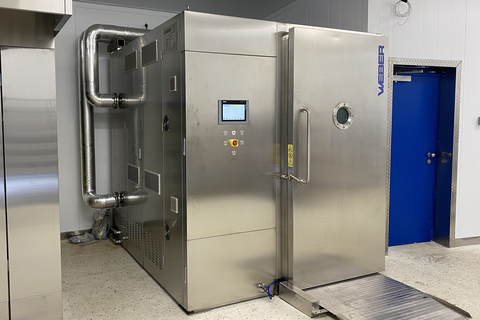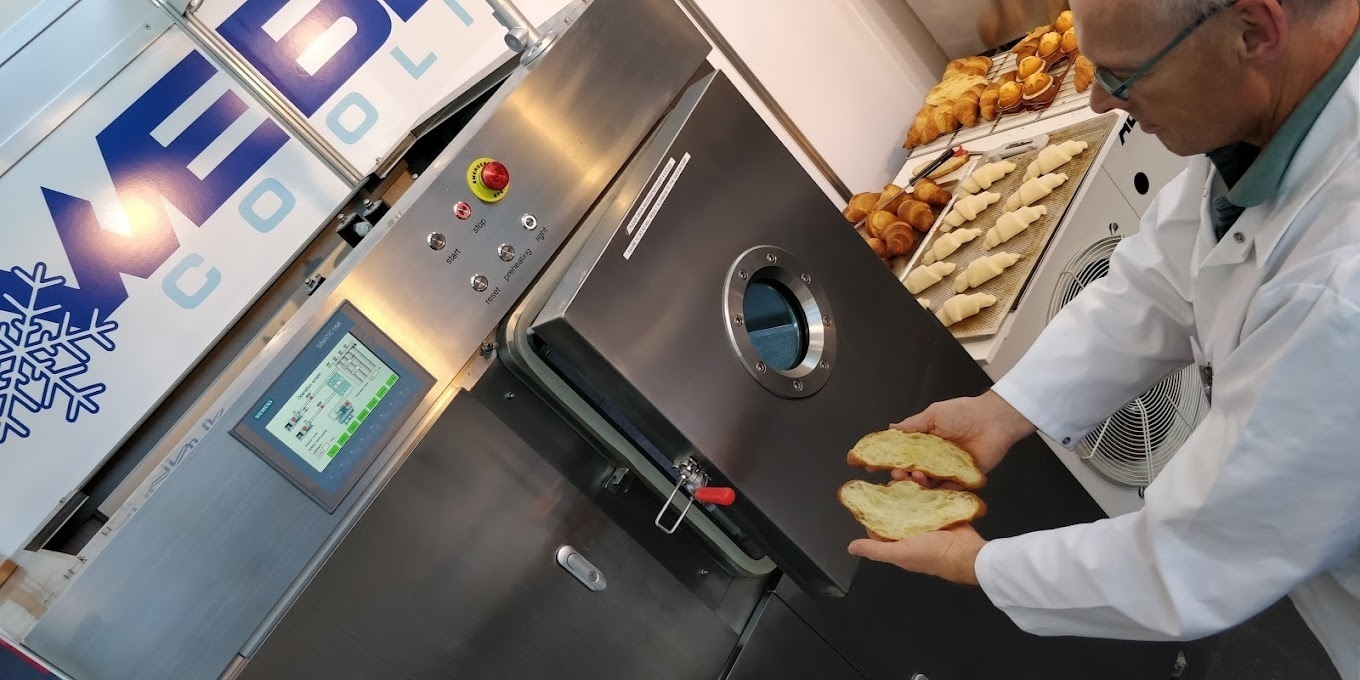The Vacuum Cooling Process Explained
What is vacuum cooling and how does it work? We will help you understand it in this post.
What is vacuum cooling?
Vacuum cooling is an advanced pre-cooling method that leverages the principle of evaporation to rapidly reduce the temperature of fresh produce such as flowers, vegetables & herbs, bakery products, cooked food & sushi. This process is unique because it cools the product from the inside out by causing (a small amount) of moisture within the product to evaporate, which absorbs heat and leads to a quick drop in temperature.
Vacuum cooling works in the following way: produce is placed inside an airtight steel chamber (vacuum cooling chamber). Once the produce is inside, the chamber is sealed, and a vacuum pump removes the air from the chamber. This reduction in pressure lowers the boiling point of water, causing (fraction of) moisture within the produce to evaporate at a much lower temperature than usual. That evaporation transfers energy from "inside-out" and cooling happens rapidly. The cooling process typically takes in a few minutes, depending on the type of produce. During this time, the produce reaches a uniform temperature throughout. Therefore, the cooling & quality of produce is uniform, shelf life is extended and the whole supply chain/cold chain process can be much more efficient.
Benefits of Vacuum Cooling
- Uniform Cooling: Unlike traditional cooling methods, which may cool the surface of the product faster than the core, vacuum cooling ensures that the entire product reaches the same temperature. This uniformity is crucial for extending the shelf life of the produce.
- Extended Shelf Life: By rapidly cooling the product and reducing its temperature uniformly, vacuum cooling slows down the respiration rate of the produce. This delay in the natural aging process leads to a longer shelf life, ensuring that the produce remains fresh for a more extended period.
- Cost-Effective: Vacuum cooling is more cost-effective than conventional cooling methods. The reduced energy consumption and faster processing time translate to lower operational costs, making it an economically viable option for large-scale producers.
- Versatility: Vacuum cooling is particularly effective for products with a high surface-to-weight ratio, such as leafy greens, spinach, mushrooms, and flowers. However, it is also suitable for more compact produce like beans, broccoli, celery, and sweetcorn. This versatility makes it an ideal solution for a wide range of perishable goods. Vacuum cooling can greatly help in bakeries, food cooling, and vacuum freeze-drying applications. Regardless of application - Weber Vacuum Group can help.
- Energy efficiency: According to studies and our experience Vacuum cooling is as much as three times energy efficient compared to Blast Chillers
- Space optimization: With vacuum cooling, you can do up to 3 cycles per hour, which means you can cool to a storage temperature quickly thereby reducing the space required for pre-cooling, and putting it to more productive purpose.


Step-by-Step Guide to Implementing Vacuum Cooling
- Assess Your Produce Needs: Determine which of your products would benefit most from vacuum cooling. Focus on items that are highly perishable or have a high surface-to-weight ratio.
- Choose the Right Equipment: Invest in a vacuum cooling system that suits your production scale. Consider factors like chamber size, cooling speed, and energy efficiency.
- Train Your Team: Ensure that your team is well-trained in operating the vacuum cooling system. Proper training will maximize the benefits of the technology and ensure consistent results.
- Monitor and Optimize: Regularly monitor the cooling process to ensure optimal performance. Make adjustments as needed to improve efficiency and product quality.
- Leverage the Benefits: Use the extended shelf life and uniform cooling as key selling points in your marketing strategy. Vacuum cooling is the next step if you are looking forward to increasing the quality of your produce and the overall productivity & throughput of your cold chain.
By following these steps, you can effectively implement vacuum cooling in your operations, improving product quality, extending shelf life, and reducing costs.
Weber Vacuum Group is here to help you set it up. From the first to the last step. We have installed over 500 machines worldwide in the business of bakery, fresh produce, food produce, and freeze-drying and since 2011 we actively support our partners & customers.
Schedule a meeting with us if you want to learn more!
Get a quote
Thank you for your interest in our vacuum cooling solutions. Once you submit your request, our dedicated sales team will promptly reach out to you. We’ll provide all the information you need to make an informed decision, including a tailored quote that fits your specific needs. At Weber Cooling, we’re committed to helping you enhance your bakery operations with cutting-edge technology, and we look forward to assisting you in this process.



